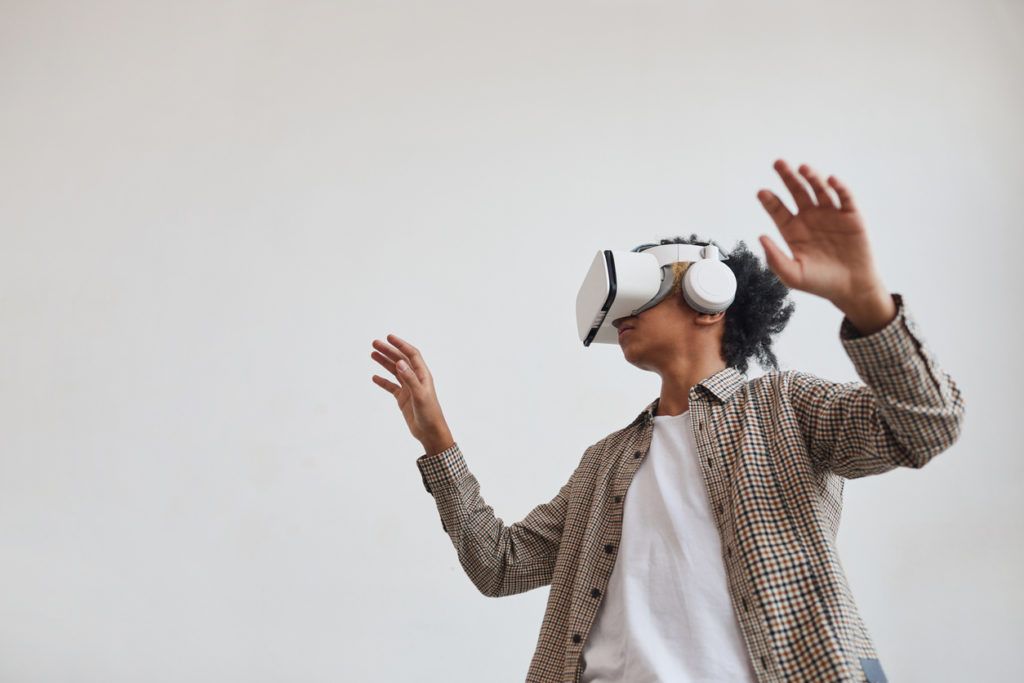
 “I created the OASIS because I never felt at home in the real world. I didn’t know how to connect with the people there. I was afraid, for all of my life, right up until I knew it was ending.” James Halliday, creator and kingpin of the OASIS in Ernest Cline’s Ready Player One, shaped an entire universe in the digital realm where players could be whoever they wanted to be and do whatever they wanted to do. In the OASIS, one would be free from the limitations of the real world including physical appearance, natural limitations, gender identity, and relational history – as much or as little as desired. Halliday longed for a space where he could feel “at home,” free from sociopsychological complications and interpersonal anxieties. His solution was to create an out-of-body experience in which connecting with others could be a fluid, disembodied digital construct limited only by one’s imagination. The OASIS.
“I created the OASIS because I never felt at home in the real world. I didn’t know how to connect with the people there. I was afraid, for all of my life, right up until I knew it was ending.” James Halliday, creator and kingpin of the OASIS in Ernest Cline’s Ready Player One, shaped an entire universe in the digital realm where players could be whoever they wanted to be and do whatever they wanted to do. In the OASIS, one would be free from the limitations of the real world including physical appearance, natural limitations, gender identity, and relational history – as much or as little as desired. Halliday longed for a space where he could feel “at home,” free from sociopsychological complications and interpersonal anxieties. His solution was to create an out-of-body experience in which connecting with others could be a fluid, disembodied digital construct limited only by one’s imagination. The OASIS.
When Cline’s book released in 2011, it was ahead of its time. In 2018, when it hit the big screen as a blockbuster movie, the concept was not quite so far-fetched but was still more of a creative possibility than an impending reality. Then, the COVID-19 pandemic of 2020-2022 thrust the world into technological innovation and proliferation. Disembodied interactions became the norm as work, school, church, and social interaction necessarily took the form of connection in the digital space. Even today, technological advances continue to push the limits of what relational connection looks like. Virtual reality, metaverse, and social media are the popular relational connection points of our day. But the rapidity of technological advancement in our generation should warn that these may be but the tip of the iceberg. Halliday’s “real world” seems to be increasingly more of a fluid concept.
Churches should use all the tools of their time to reach the world with the gospel. But at every new opportunity, they should pause to reflect on how new innovations do or do not fit into the biblical model. With the rapid proliferation of digital tools and the widespread conventionality of their recent usage, the post-COVID church is asking many timely questions: Is online worship a permanent option for our church members? How can we be creative in utilizing digital tools for evangelism and discipleship? How do we best connect with our community through digital means? Is the metaverse an appropriate model for church services or church activities? Is there a biblical model, or are there biblical principles, to help us process all of this?
I do not intend to answer all those questions in this short article. But I do want to focus on the importance of physical gathering when it comes to effective evangelism. On a very basic level, the Acts 2 Pentecost presents us with a descriptive occurrence of successful local church-based evangelism: the church physically gathers, and in its physical gathering it is empowered for evangelistic success. One might even say before they scattered to evangelize, they gathered to evangelize.
When the Holy Spirit was poured out on the praying church in Acts 2, “they were all together in one place.” The emphasis here is on the physical gathering of the church. Each disciple of Jesus is a psychosomatic union – body and soul, together. The text of Scripture knew nothing of a disembodied experience for social connection. Jesus was God incarnate, body and soul. In like, the church was an ecclesia (a gathering) of real individuals, body and soul together. To be “all together in one place” was to be physically present with one another, of one mind and of one heart. One might argue that without the technological advancements of our day, this was the church’s only option in the First Century. I would maintain, however, that there was more to their physical gathering than the limitation of possibility.
On the Day of Pentecost, the Holy Spirit not only filled each disciple (2:4) but also filled “the whole house where they were staying,” (2:2). There was an individual filling and a corporate filling, both set in the context of a physical gathering in a physical space. That empowerment from the Holy Spirit burst forth into bold gospel witness as each disciple proclaimed “the mighty acts of God” in the tongues of those whom God had gathered at their prophetic platform (2:11). They were “all together in one place,” and there, they were empowered for bold evangelistic witness.
One of the earliest heresies to challenge biblical Christian orthodoxy was Gnosticism, the belief that the soul/mind was good while the material body was bad. Some Gnostics even believed that the Lord Jesus did not have a real, physical body, but only the appearance of one. Disembodiment was the goal – the solution, one might say, to escape the paradox of intrapersonal psychosomatic warfare. But the Gnostics got it wrong. Disembodied experiences, if they could have been achieved, would not have served God’s good design. Rather than mystically releasing us from the bondage of the flesh, God, in Christ, became flesh (John 1:14). In his physical body, he proclaimed the gospel (Mark 1:15). After his ascension he sent the Holy Spirit to empower his gathered body (the church – Romans 12, 1 Corinthians 12, Ephesians 4) for the same task, in perpetuum, until he would physically return for them (Acts 1:8-11).
The implications are vast, no doubt. Technological advancements of our day should raise as many thoughtful questions as they do exciting opportunities. Certainly, digital tools and platforms must be utilized for the advancement of the gospel. Christ followers should engage in digital evangelism in online social spaces. But they should not forsake the regular physical assembling of themselves in the process. Disembodied experiences do not allow for the meaningful relational connection necessary for ongoing spiritual empowerment. In the physical gathering of the church, however, there is a supernatural enduement for evangelistic success. God meets us there, when we are “all together in one place,” of one mind and one heart. He fills the place just as he fills each disciple.
Online spaces are not evil in themselves, but they are not sufficient gathering points for the church. They provide exciting new opportunities for evangelistic witness and for ongoing relational connection between physical gatherings. But disembodied interactions can never replace the physical gathering of Christ’s churches. To be empowered for effective witness, even in our day, we must regularly, physically gather with the body of Christ. To follow the biblical pattern by God’s good design, we must gather to evangelize.
“I created the OASIS because I never felt at home in the real world. I didn’t know how to connect with the people there. I was afraid, for all of my life, right up until I knew it was ending.” Halliday continues, “That was when I realized, as terrifying and painful as reality can be, it’s also the only place where you can find true happiness. Because reality is real.” Reality is real. Who would have thought that could be such a powerful (and potentially controversial) statement in our generation? The physical gathering of the church is where believers should feel most “at home.” Disembodied (online) encounters present timely opportunities for evangelism. But the weekly gathering is where the church gets real. There, in that space, something supernatural happens: the Holy Spirit empowers Christ’s people for evangelistic witness. In the physical gathering of the church there is a supernatural enduement for evangelistic success. If we are to continue in the biblical pattern of evangelistic empowerment, we must capture and utilize digital opportunities for gospel witness. But we cannot neglect the physical gathering of the church in the process. There, in the presence one another, the Holy Spirit empowers Christ’s people for ongoing, effective evangelism. We must gather to evangelize.

















